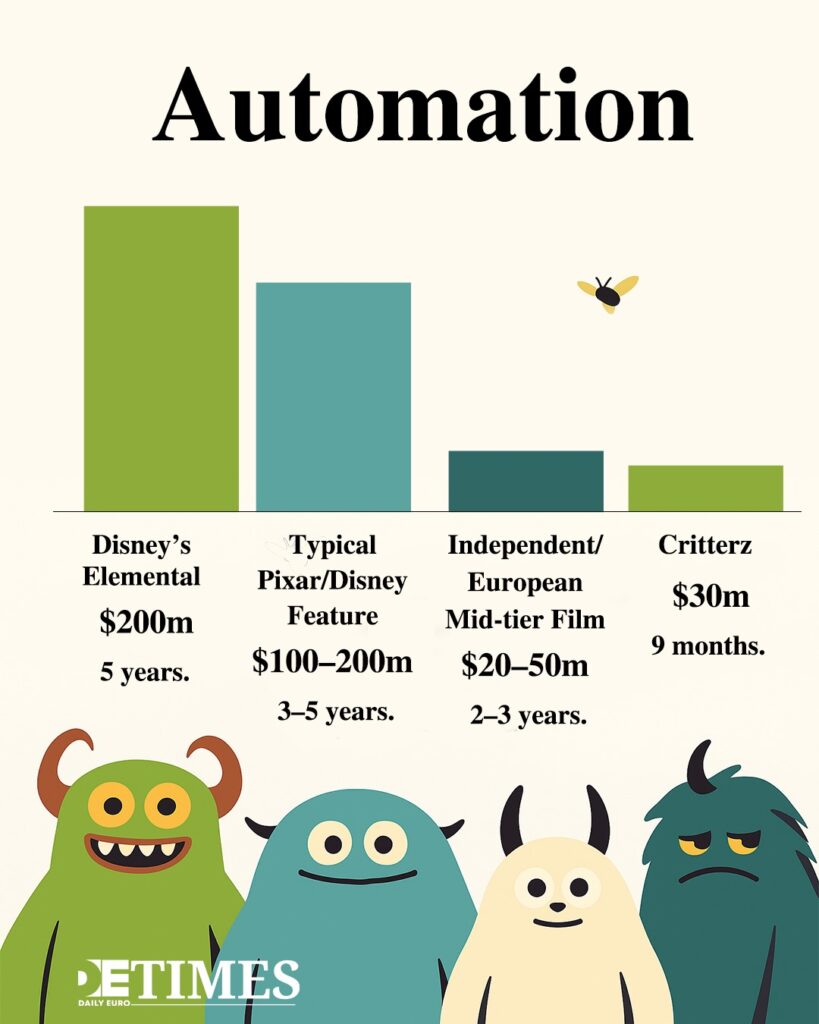OpenAI just threw down a gauntlet. The company announced a nine-month production schedule for its animated film, Critterz, with a budget capped at a lean $30 million.
The disruptive potential of the project is clear when considering the old model. Traditional features like Disney’s Encanto typically require three to five years and budgets soaring past $100 million. By targeting the prestigious Cannes Film Festival, Critterz is positioned as a direct challenge to the established system.
The Economic Imperative
The industry’s upheaval is a direct response to a studio system buckling under its own weight. When a Pixar movie like Elemental carries a reported budget of $200 million, originality becomes a liability. The financial risk of failure is so immense that studios retreat to the safety of sequels and established franchises.
Such a market creates a vacuum. Spiraling costs have priced out mid-tier and independent projects, particularly in Europe, where studios struggle to compete with Hollywood’s nine-figure spending. The resulting economic pressure cooker created the perfect opportunity for technology to offer a radical solution.
A New Production Model
The Critterz solution is a hybrid of human and machine labor. The process begins with artists. Human voice actors perform scripts, and concept designers create the original look and feel of the world. Foundational artwork is then fed into generative AI tools like GPT-5 and Sora.
AI models handle the immense, time-consuming task of producing animated sequences from the initial prompts. The production team describes the method as “human-led and AI-assisted.” The creative vision remains in human hands.
The machines function as new, powerful tools.

The Human Cost
For the artists and technicians whose jobs are built on the old tools, the shift presents a direct threat. The anxiety is concrete and widespread. The 2023 Hollywood strikes were fought, in large part, over the encroachment of AI into creative roles. The unions saw automation as an existential danger to their members’ livelihoods.
A central conflict emerges: will technology augment human creativity or supplant it? The very idea for Critterz originated with an OpenAI specialist, Chad Nelson, who began experimenting with DALL-E. What started as a proof of concept has now scaled into a project validating the job replacement fears that animators harbor.
A Fundamental Power Shift
Beyond the fate of individual jobs lies a larger question of industry control. For a century, creative power was concentrated in Hollywood studios. A new hierarchy may be forming.
Insiders are watching to see if the AI-assisted model will truly democratize filmmaking by lowering costs for independent creators. An alternative outcome is a power shift from old media conglomerates to the new tech giants who own and control the AI models. Instead of pitching a story to Disney, the next generation of creators might be pitching to OpenAI or Google.
The Final Verdict
The spreadsheets and power struggles become secondary to the movie’s ability to connect with viewers. Great creative works are defined by their emotional resonance, a quality that remains stubbornly human. The challenge for technology is proving it can manufacture soul.
The promise of cost savings could indeed fund more diverse stories. The final test for Critterz transcends economics and technology. It becomes purely artistic. When the lights go down, will the audience feel anything?
Answering such a question lies beyond any algorithm’s reach.
Keep up with Daily Euro Times for more updates!
Read also:
How ‘My Fault’ Sparked Rumours and Got a British Remake?
European Cinema: Art Nouveau is Back, or Just Another Blockbuster
The Squid Game: From Tragedy to Cult






